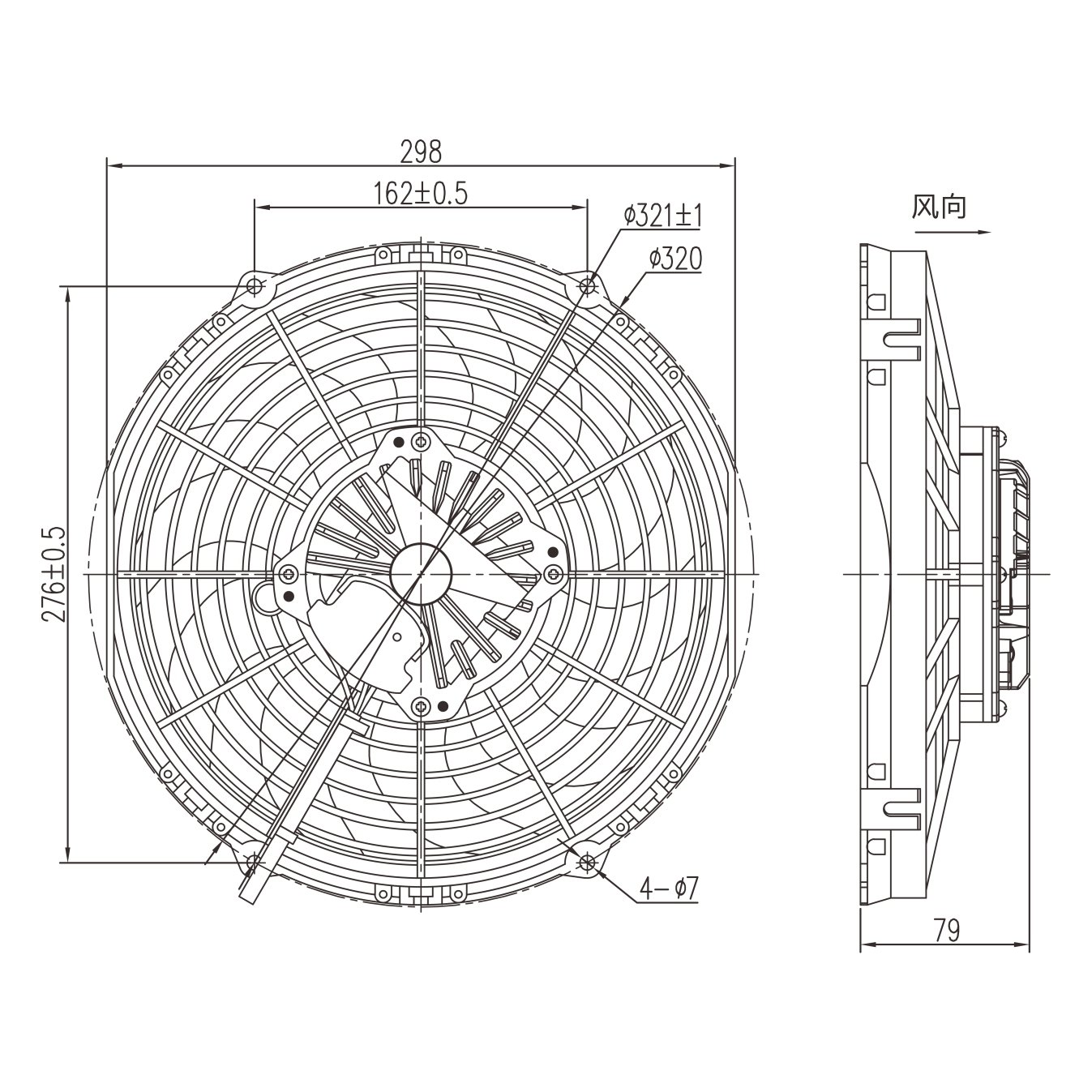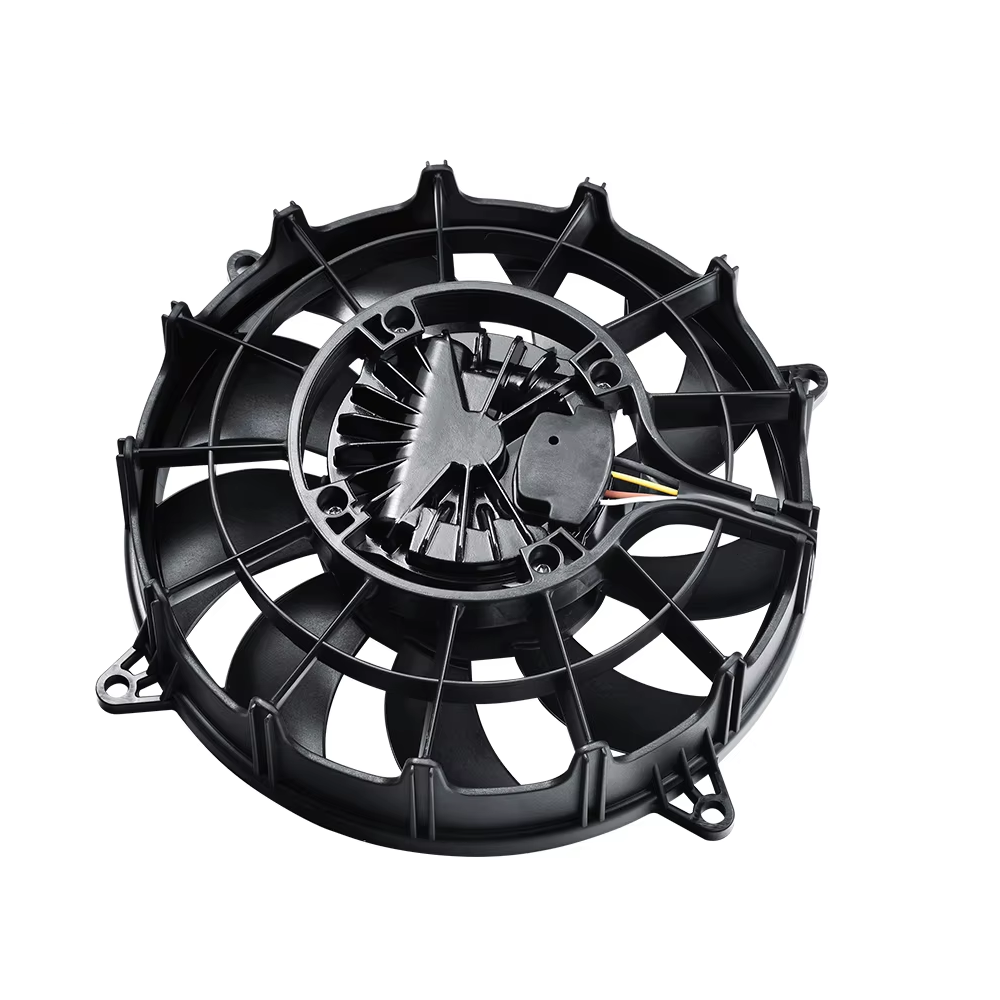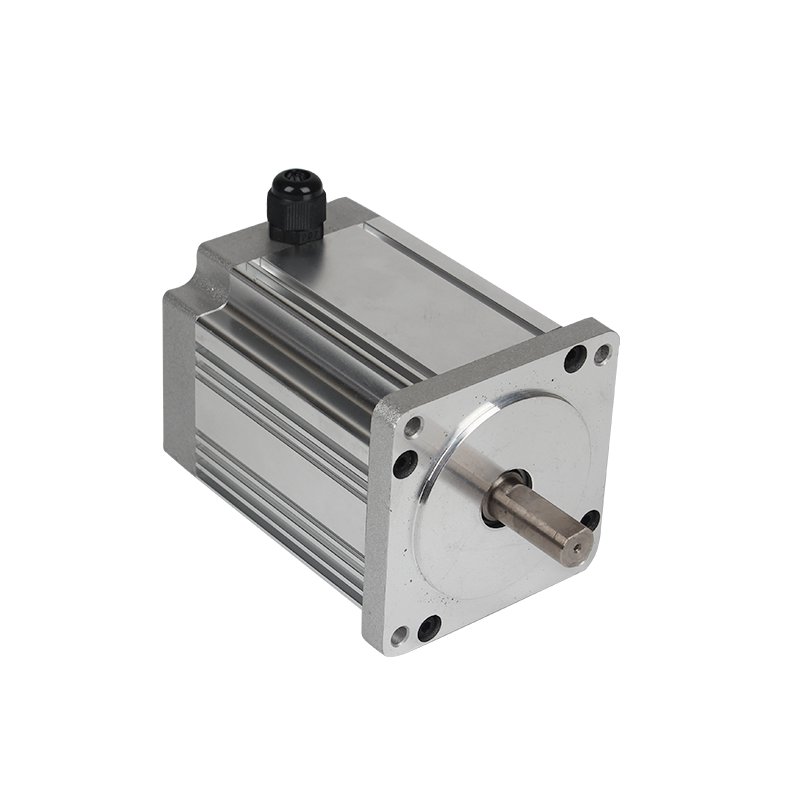The axial fan design has evolved significantly over the years, responding to the growing demand for energy efficiency, environmental sustainability, low noise operation, and smart functionalities. With technological advancements and the increasing need for optimized industrial and residential applications, axial fans have adapted to meet these changing requirements. This article explores the key innovations and developments shaping the future of axial fan design.
Energy-Efficient Design
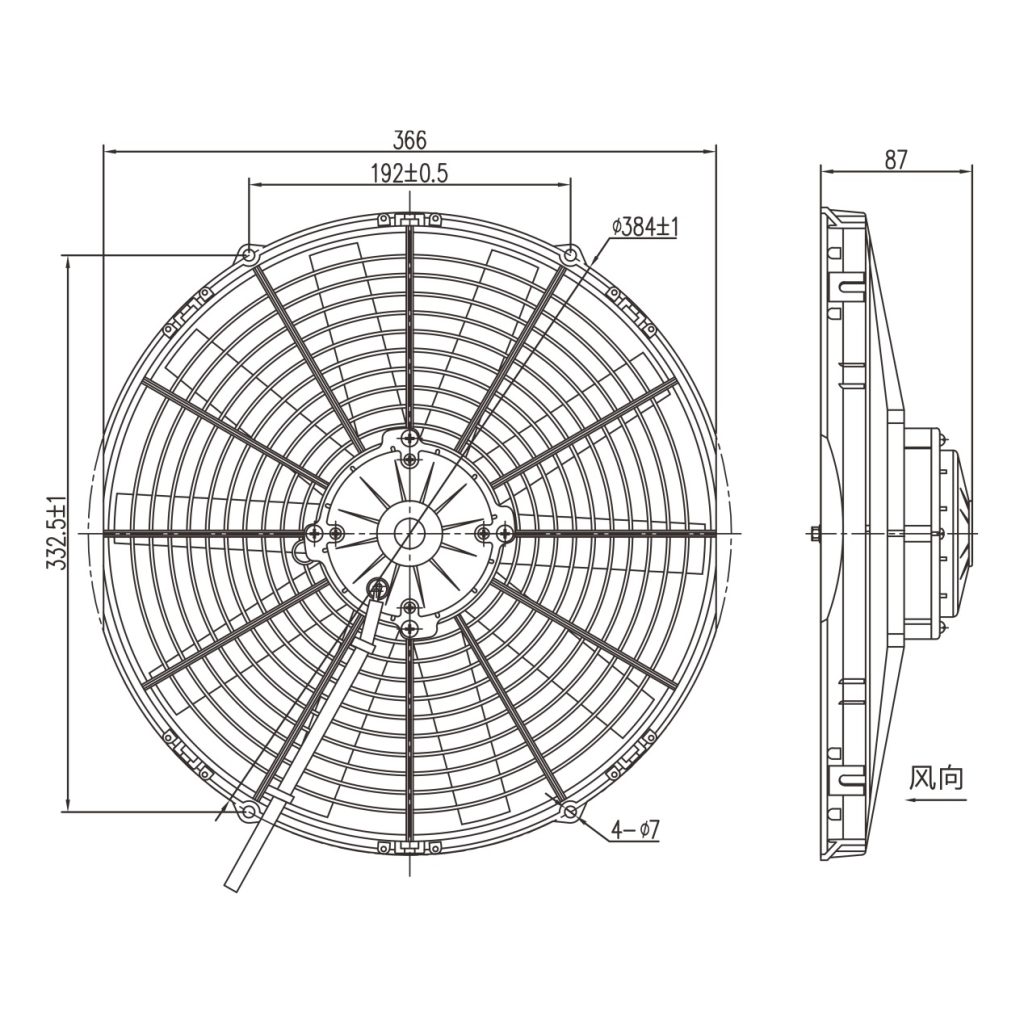
In the context of global energy concerns, energy efficiency has become one of the most important aspects of axial fan design. Manufacturers are constantly striving to develop fans that consume less power while delivering higher performance. The most notable methods for improving energy efficiency in axial fans include:
- Optimized Blade Design: The shape, number, and angle of the blades directly affect the fan’s airflow and energy consumption. By improving the aerodynamics of the blades, less energy is required to move the same volume of air.
- Advanced Motor Technologies: Axial fans now frequently use brushless DC motors (BLDC), which are more energy-efficient than traditional motors. These motors consume less power while offering longer operational lifespans and reduced maintenance.
For example, Fangya Motors specializes in designing energy-efficient axial fans that optimize both performance and energy consumption. Their fans are designed to meet the highest standards of energy efficiency, ensuring reduced operational costs in the long run.
Additionally, integrating variable frequency drives (VFD) helps in adjusting fan speeds according to the specific needs of the system, further improving energy usage efficiency.
Intelligent Control Technologies
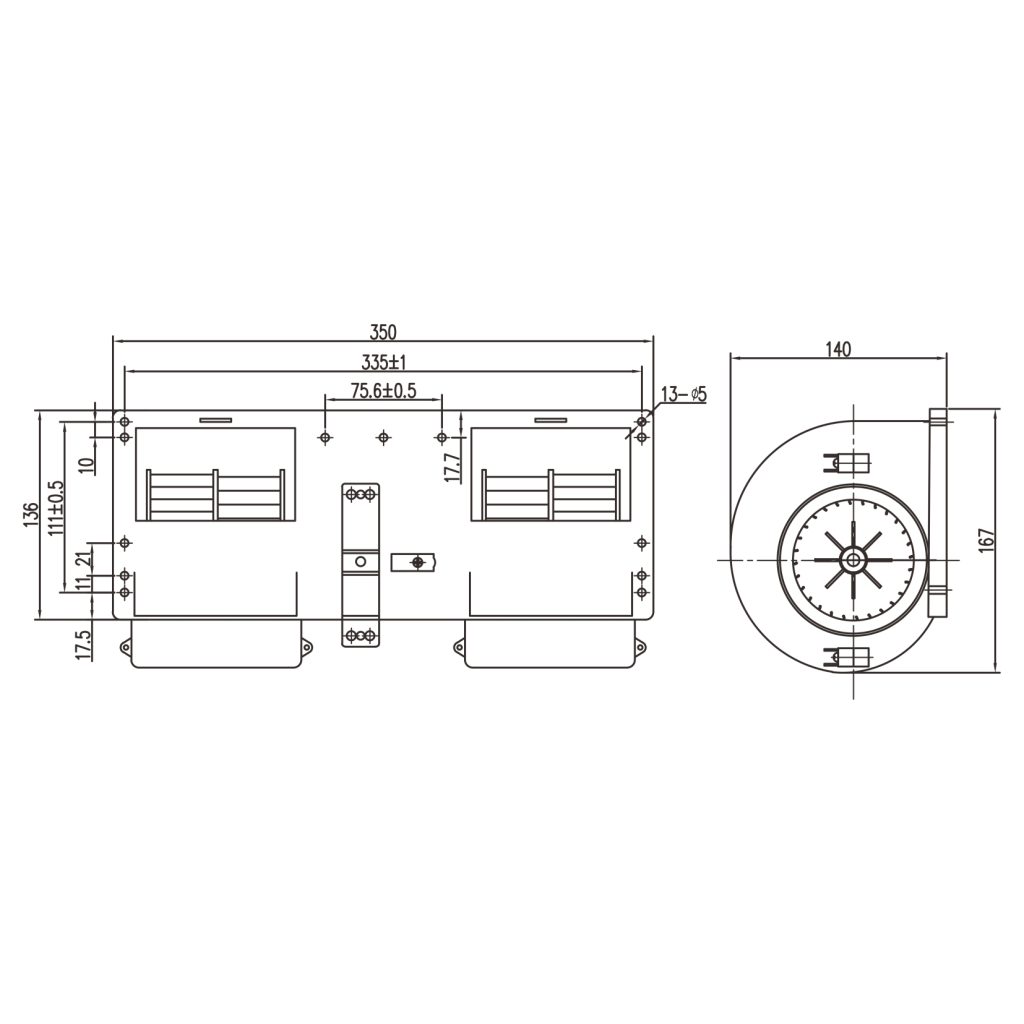
The integration of smart technologies has transformed axial fan design, making them adaptable to various environmental conditions. Modern axial fans equipped with intelligent control systems can automatically adjust their speed, optimize airflow, and ensure energy savings. Some key features of intelligent control in axial fans include:
- Adaptive Speed Regulation: Fans can now monitor real-time data such as temperature, humidity, and airflow to adjust their speed accordingly. This feature ensures that the fan operates at the most optimal performance level, avoiding excessive energy consumption.
- Smart Sensors and IoT Integration: By embedding sensors within the fan, manufacturers can collect operational data, analyze it, and make adjustments remotely. This is particularly useful in industrial settings where large fan systems are used.
For instance, the use of Internet of Things (IoT) technology enables predictive maintenance, where the fan system alerts operators when issues like wear or malfunctions are about to occur. This reduces downtime and extends the operational life of the equipment.
The growing trend in smart ventilation systems integrates these advanced controls, leading to more sustainable and energy-efficient buildings and facilities.
Noise Reduction Innovations
Noise is an often-overlooked but important aspect of axial fan design, particularly in environments where low noise levels are critical. Over the years, several methods have been developed to minimize noise production from axial fans:
- Optimized Blade Design: The geometry of the blades plays a crucial role in reducing noise. By designing blades with smoother contours and specific angles, turbulence is minimized, resulting in quieter operation.
- Vibration Damping: Adding vibration-damping materials and mounting systems to the fan can help reduce the mechanical noise caused by the motor and other components.
- Advanced Manufacturing Techniques: Utilizing precision manufacturing techniques, like 3D printing, allows for the creation of blades with greater accuracy, reducing unnecessary noise-generating turbulence.
Innovations in blade aerodynamics and material selection (such as lightweight composite materials) continue to reduce noise levels without compromising performance. The Noise Control Engineering offers a range of solutions that specifically target noise in axial fans, ensuring optimal quietness even in demanding environments.
Environmental Sustainability and Eco-Friendly Materials
As environmental concerns continue to shape the manufacturing sector, axial fan designers are increasingly focusing on the sustainability of their products. Key developments in this area include:
- Eco-Friendly Materials: Many companies are moving towards using recyclable plastics, aluminum, and other eco-friendly materials in fan construction. These materials not only reduce the environmental impact but also enhance the durability and efficiency of the fans.
- Sustainable Manufacturing Processes: Using sustainable production methods, such as 3D printing and additive manufacturing, reduces waste and increases the precision of the components, making them both eco-friendly and more efficient.
Furthermore, the adoption of green technology in axial fans, such as solar-powered fans for ventilation in remote locations, is expected to gain more traction in the coming years. For example, fans designed specifically for agricultural applications may integrate solar panels, eliminating the need for an external power supply.
Innovation in Fan Performance and Cooling Systems
Axial fan technology has also seen significant advancements in performance, particularly in the cooling industry. A notable innovation is the introduction of variable-speed axial fans, which help optimize airflow based on cooling needs, ensuring the system operates with minimal energy consumption. One prominent development is seen in air cooling systems used in data centers and industrial applications.
A specific case is the Axial Flow Fans for Heat Exchanger Applications, where modern axial fans are designed to optimize heat exchange efficiency. By precisely controlling airflow, these fans maintain optimal temperatures in heat-sensitive environments, ensuring high reliability and safety.
Additionally, the use of composite materials in fan blade construction allows for better durability and performance in extreme temperatures, further enhancing fan reliability in high-demand environments.
Market Trends and Future Directions
The global market for axial fans is rapidly evolving, driven by the increasing demand for more efficient and environmentally friendly solutions. According to recent reports, the axial fan market is forecast to grow as industries such as HVAC (heating, ventilation, and air conditioning), automotive, and manufacturing seek more sustainable and energy-efficient fan systems.
Emerging trends include:
- Miniaturization of Fans: There is a growing demand for smaller, compact fans that can deliver high performance in confined spaces. These innovations are particularly relevant in the automotive and aerospace industries, where space and weight constraints are critical.
- Integration with Other Systems: Future axial fans may be integrated into more complex systems that offer advanced cooling and ventilation capabilities, such as smart home ventilation systems and data center cooling solutions.
Additionally, the shift towards 3D printing in fan blade manufacturing is expected to revolutionize how designs are approached. With the ability to produce highly complex geometries and materials, 3D printing offers unprecedented design flexibility and efficiency in the manufacturing process.
Conclusion: The Future of Axial Fan Design
The future of axial fan design is undeniably exciting, driven by advances in energy efficiency, smart technology, noise control, and sustainability. As industries continue to demand higher performance and lower environmental impact, axial fans will need to evolve and incorporate cutting-edge innovations.
From smart control systems to advanced noise reduction and eco-friendly materials, the ongoing development of axial fan technology ensures that these products will continue to meet the diverse needs of various industries. As market demands shift, axial fan manufacturers are poised to lead the way in providing solutions that are not only highly efficient but also environmentally responsible.
For more on energy-efficient fan technologies, visit Fangya Motors and explore their range of high-performance solutions.
Stay ahead of the curve with innovative axial fan designs that not only perform but also contribute to a more sustainable future.

